CAPE TOWN, South Africa — The 2019 Audi A7 is a stone-cold fox, plain and simple. From its rakish squint to its faceted tail, the new Sportback updates the design-centric theme that originated in 2009 with striking, fresh sheetmetal. But while the original A7's big hatchback layout was a novel packaging exercise paired with a somewhat compromised rear-seat experience, the new model takes a number of technological leaps forward that add some much-wanted substance to that style.
For starters, the new A7 shares enough advanced features with the tech-laden A8 to make it among the most sophisticated sedans on the planet — though Audi isn't sharing all of those bells and whistles with the U.S. market (more on that later). When the A7 drops in the fourth quarter of 2018, it will be launched with the same trick 3.0 TFSI V6 found in the A8, at least until the sportier S8 arrives with a gruntier V8. Producing 340 horsepower and 368 lb-ft of torque, the entry-model V6 is a mild hybrid that uses an integrated starter/generator on a 48-volt platform that enables up to 12 kilowatts of energy recuperation. This powertrain is mated to a seven-speed dual-clutch S-tronic gearbox. The so-called belt alternator generator (BAS) is capable of coasting with the engine off within certain speed ranges, though U.S. models won't have the coasting feature at launch.
While we're bursting your bubble, we should probably also mention that the A7 won't be offered, at least initially, with the A8's mild-boggling predictive suspension system that scans road surfaces ahead and uses electromechanical dampers to raise the body and control wheel travel, ensuring a silky ride. Instead, the A7 will come with a standard steel spring setup at launch, and an adaptive air suspension will likely be offered as an option.
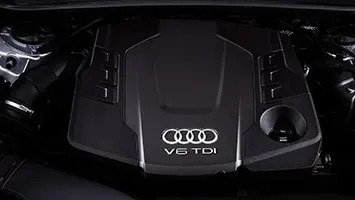
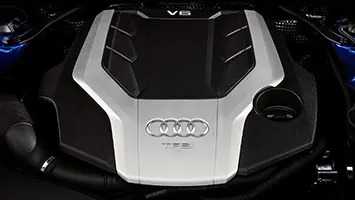
Slide into the new A7, and its redesigned cabin presents a dramatically updated look and feel over the outgoing model. There are pleasantly sculpted interior surfaces with available wood veneer treatments which gently arc and flow with those creases — all clever design features whose only contradictory elements are the oddly out of place (and disappointingly inauthentic) fake rear tailpipes that have spawned throughout the Audi lineup. While exterior proportions remain unchanged, the A7's new aluminum and steel chassis expands half an inch in wheelbase and 0.8 inches in interior length, boosting legroom, headroom, and knee room for rear passengers. Access to those rear seats now involves less head banging, while the slick, frameless door design has thankfully been retained. Trunk volume grows to 18.9 cubic feet, or 49.1 cubic feet with the rear seat down, enough space to place two golf bags sideways.
As with the A8 (and much like its sister car, the Porsche Panamera), physical buttons and switches have been all but eradicated in favor of three glass panel displays. Top and center is a 10.1-inch infotainment touchscreen canted towards the driver, one of two new MMI touch response screens which command nearly every control in this two-ton sedan (save items like the tiny volume/power dial, the stalks on the steering column, and buttons and dials on the steering wheel). Below it is a slightly smaller display for climate control settings.

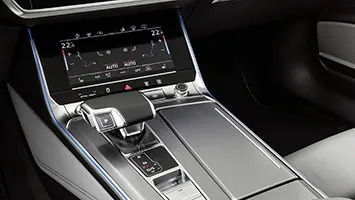
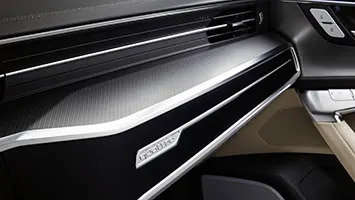

Conventional gauges are also ditched for a 12.3-inch Virtual Cockpit-equipped digital dashboard. While the A7's flatscreen-apalooza holds a certain appeal to extreme minimalists, the sleek and flush instrumentation begs the inevitable question: Is this brave new button-free world really a good thing? On a basic level, the new interface is intuitive and powerful. And heck, at least Audi left the HVAC vents as physical controls, unlike the frustrating Panamera which requires diving into a menu to move the vents. But the depth of Audi's menu system sometimes makes it difficult and frustrating to access certain controls that were once simple. The touchscreens also lack the tactical satisfaction of physical buttons, not to mention the fact that more attention and precision is required when aiming your fingertip at a small area on a screen in a moving car. The few key fixed "buttons," like Drive Mode select, Traction Control Off, Maximum Defrost, and headlight controls are merely spots on a hard, flush surface. Again, the setup works, but without the same physical reassurance as a real button.
The gear selector is a spring-loaded, leather-wrapped shifter that offers reasonably satisfying electromechanical connection to the transmission. At least the A7's driving dynamics are, for the most part, more physically gratifying than that simulated mechanical linkage. The standard driving mode produces a smooth, agreeable power delivery and quiet engine operation at lower speeds, feeling more like an überluxury sedan like the S-Class, 7-Series (and yes, A8) than a focused sports sedan. We're guessing future performance variants, presumably S7s and RS7s, will be considerably punchier.
Even with the steering set to Sport, effort is relatively low, though feel is good enough (and Michelin Pilot Sport 4s sticky enough) to encourage high-speed cornering. Dip deeper into the throttle and the refined hum of the V6 emerges, trading some isolation for incrementally more feedback. New optional acoustic glazing goes a long way toward subduing ambient noise in the cabin, and our test car came equipped with air suspension that also managed to tune out potholes while keeping things crispy and responsive in sport mode. Cabin silence spawns the illusion that the A7 isn't as quick as it actually is. Though acceleration seems strong with aggressive driving, the lack of noise masks the fact that the V6 is capable of whisking the A7 to 62 mph in only 5.3 seconds — pretty swift for a base engine on a big sedan.

Tackling the mountain passes outside of Cape Town, South Africa, in sport mode was more entertaining and confidence-inspiring than you might expect from such a large sedan, though some of that capability was due to our test car's four-wheel steering system. That 4WS system (you guessed it!) won't be available at launch for U.S. market cars. The system turns the rear wheels in the opposite direction as the fronts at speeds below 37 miles per hour, then turns them in phase with the fronts at higher speeds. As with the A8, rotating the rear wheels has the effect of tightening the turning radius to mimic the midsize A4's. As vehicle dynamics go, it's a pretty neat party trick that we sadly won't get in the first A7.
Oh, and one more thing: Though the A7 is ready for a slew of laser scanners, radars, ultrasonic sensors and 360 cameras, it likely won't be able to legally utilize its Level 3 autonomous capabilities at launch due to legislative regulations which have yet to approve the self-driving technology. While we didn't get to test-drive the Level 3 setup, the bare bones assisted-driving features didn't blow us away in their execution. The system did a decent enough job of keeping distance with cars ahead, but struggled to recognize neighboring traffic when it encroached into our lane. Similarly, the lane-keeping assist could have been smoother, as it pinballed within the lane while searching for its trajectory. Those niggles might have been annoying in our test car, but we'll have to experience the full-blown Level 3 treatment before we pass ultimate judgment.
While the U.S. version of the A7 will miss a few of the key tech features that help it stand out from its competitive set (among them four-wheel steering, predictive suspension, and engine coasting), its distinctive design language offers a more relatable form of differentiation, especially when viewed against the chronically staid A8. Add the volumetric appeal of its electrically operated rear hatch, and the A7 manages to tick many of the boxes we never knew we had. It's that sort of panache and grace that makes the A7 our type of large sedan, one with enough style and capability to upstage its flagship big brother, the A8.
Related Video:
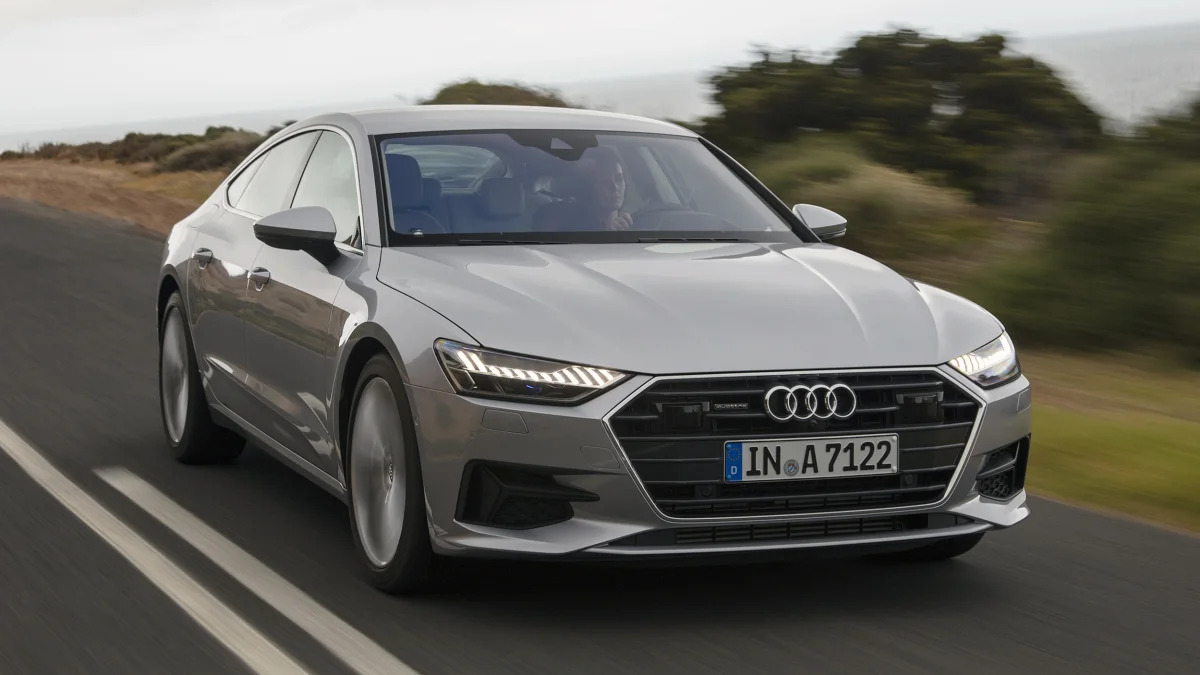









Sign in to post
Please sign in to leave a comment.
Continue